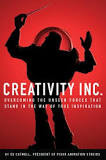 |
| amazon.co.uk |
I have already written about managing time constraints by focusing on in-depth learning experiences. But over the break I have read a couple of books that have clarified my thinking on this and helped me to form a plan of how to achieve this more consistently with my own students. The hugely popular 'Zen and The Art of Motorcycle Maintenance' has been on my 'must read' list for a while now. Of the three tenants of the text, it was Robert M. Pirsig’s focus on the idea of 'quality' that resonated with me in particular. The notion that truly worthwhile actions and achievements can only be deemed worthy or significant if they could be accepted as being a true representation of 'quality'. The depth and discussion on what this means is obviously best addressed by reading the book for yourself. But it prompted me to think about how meaningless are some of the activities teachers ask students to do. Particularly if there is no outcome of quality and no clear pathway from what they are practising to achieving quality. The obvious next step was to relate this to my everyday experience; what part does 'quality' play in my students’ activities? What do they need to be able to produce real quality and how can I support them in reaching it?
Let's agree that some tasks do need to be short and some need to have a degree of repetition to aid learning. How can I ensure that these are still worthwhile and meet the 'quality' criterion? I think this is where sharing the big picture with your students is essential.
If they know the overall aims of all the small steps, what they are building towards, then they see the value and know they can achieve the 'quality' output eventually.
For the longer 'project' based tasks, the quality is easier to recognise for the students. The end product represents their research, their organisation of information and the tools they have used to communicate their learning. This is where the quality should shine. As I say to my students, if they make a film, I don't want the audience to see a film that looks like it has been made by a ten year old. If they write a story, I don't want a story that looks like it was written by a ten year old. Having these high expectations and drilling down with students what these end products need to have to be considered quality, takes time. This is where 'Creativity, Inc' comes in, which was recommended to me by a colleague.
It's a book by Ed Catmul who describes the culture that he has developed in Pixar to make the incredibly successful animated films that are a shining example of 'quality' in their field. The process of story development, fine tuning and reworking is ongoing and collaborative in the true sense of the word. The company has a 'braintrust' where directors bring their work so far, they receive feedback on what they have done in a truly supportive environment, successes are celebrated and problems and inconsistencies are observed. But the directors are not told what to do about it. The braintrust actually trusts the directors to solve the issues in the most creative ways possible. This is just a brief outline that doesn't do the process justice. He describes how nobody can claim to have all the answers at the outset, but instead there is a team that is confident that they will get to an end point of quality through their methods, processes and critically, by giving each project proper time to grow. Usually four years.
 |
| amazon.co.uk |
This notion of 'time' is a reoccurring theme. And yet how many examples of quality work in human history can we honestly say have been achieved quickly? And yet we put time limits on writing pieces, on projects, on completing Maths work. Now being able to work to a deadline is something that humans are always going to need to be able to do. But also, we need our students to produce quality.
And that takes time.



